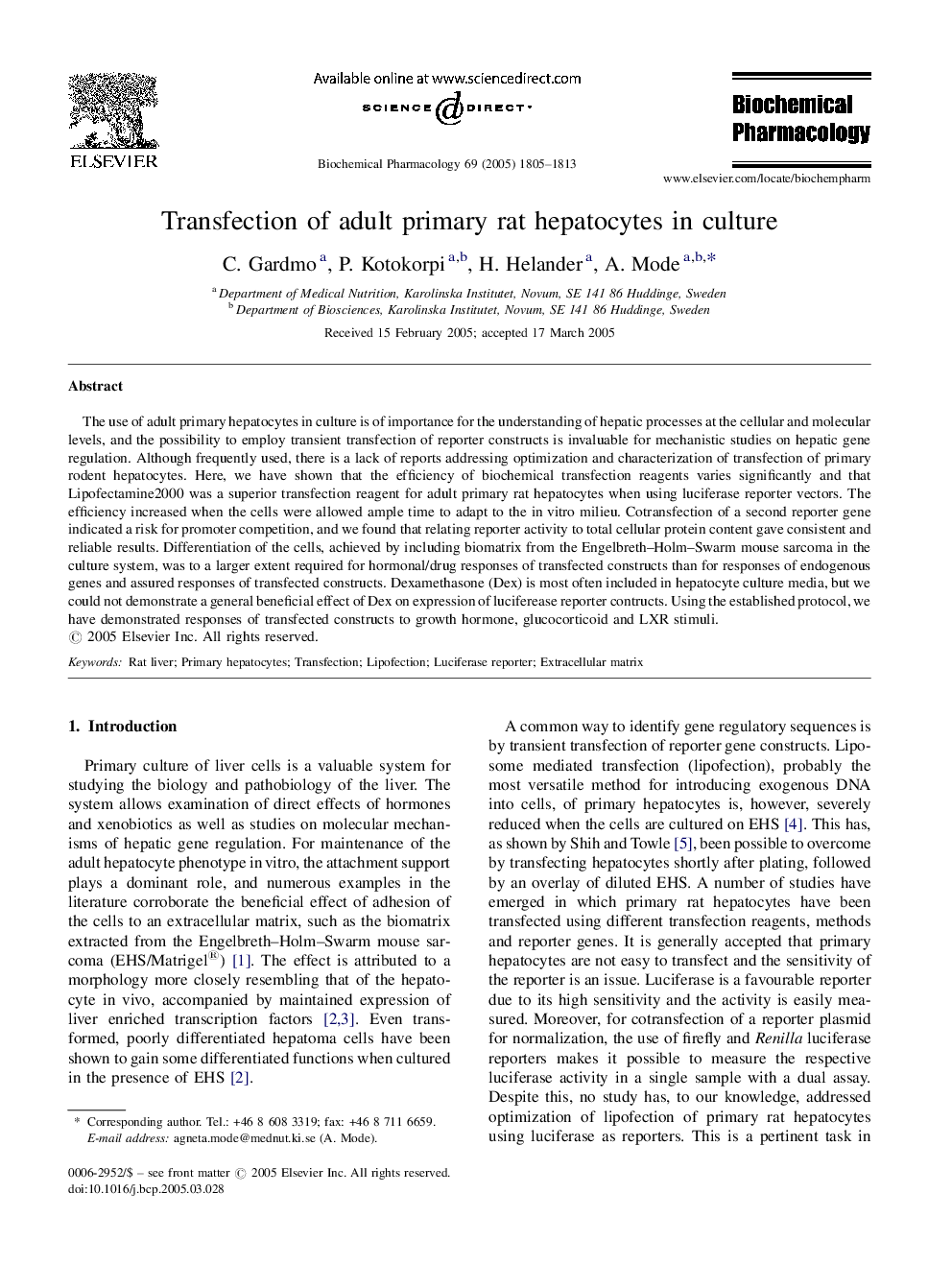| Article ID | Journal | Published Year | Pages | File Type |
|---|---|---|---|---|
| 9002036 | Biochemical Pharmacology | 2005 | 9 Pages |
Abstract
The use of adult primary hepatocytes in culture is of importance for the understanding of hepatic processes at the cellular and molecular levels, and the possibility to employ transient transfection of reporter constructs is invaluable for mechanistic studies on hepatic gene regulation. Although frequently used, there is a lack of reports addressing optimization and characterization of transfection of primary rodent hepatocytes. Here, we have shown that the efficiency of biochemical transfection reagents varies significantly and that Lipofectamine2000 was a superior transfection reagent for adult primary rat hepatocytes when using luciferase reporter vectors. The efficiency increased when the cells were allowed ample time to adapt to the in vitro milieu. Cotransfection of a second reporter gene indicated a risk for promoter competition, and we found that relating reporter activity to total cellular protein content gave consistent and reliable results. Differentiation of the cells, achieved by including biomatrix from the Engelbreth-Holm-Swarm mouse sarcoma in the culture system, was to a larger extent required for hormonal/drug responses of transfected constructs than for responses of endogenous genes and assured responses of transfected constructs. Dexamethasone (Dex) is most often included in hepatocyte culture media, but we could not demonstrate a general beneficial effect of Dex on expression of luciferease reporter contructs. Using the established protocol, we have demonstrated responses of transfected constructs to growth hormone, glucocorticoid and LXR stimuli.
Related Topics
Health Sciences
Pharmacology, Toxicology and Pharmaceutical Science
Pharmacology
Authors
C. Gardmo, P. Kotokorpi, H. Helander, A. Mode,
